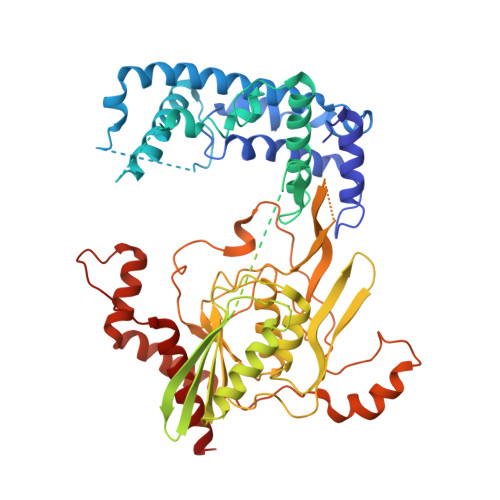Structural basis of the proteolytic and chaperone activity of Chlamydia trachomatis CT441
Kohlmann, F., Shima, K., Hilgenfeld, R., Solbach, W., Rupp, J., Hansen, G.(2015) J Bacteriol 197: 211-218
- PubMed: 25349155
- DOI: https://doi.org/10.1128/JB.02140-14
- Primary Citation of Related Structures:
4QL6 - PubMed Abstract:
Chlamydia trachomatis is the most prevalent cause of preventable blindness worldwide and a major reason for infectious infertility in females. Several bacterial factors have been implicated in the pathogenesis of C. trachomatis. Combining structural and mutational analysis, we have shown that the proteolytic function of CT441 depends on a conserved Ser/Lys/Gln catalytic triad and a functional substrate-binding site within a flexible PDZ (postsynaptic density of 95 kDa, discs large, and zonula occludens) domain. Previously, it has been suggested that CT441 is involved in modulating estrogen signaling responses of the host cell. Our results show that although in vitro CT441 exhibits proteolytic activity against SRAP1, a coactivator of estrogen receptor α, CT441-mediated SRAP1 degradation is not observed during the intracellular developmental cycle before host cells are lysed and infectious chlamydiae are released. Most compellingly, we have newly identified a chaperone activity of CT441, indicating a role of CT441 in prokaryotic protein quality control processes.
- Institute of Biochemistry, Center for Structural and Cell Biology in Medicine, University of Lübeck, Lübeck, Germany.
Organizational Affiliation:
















